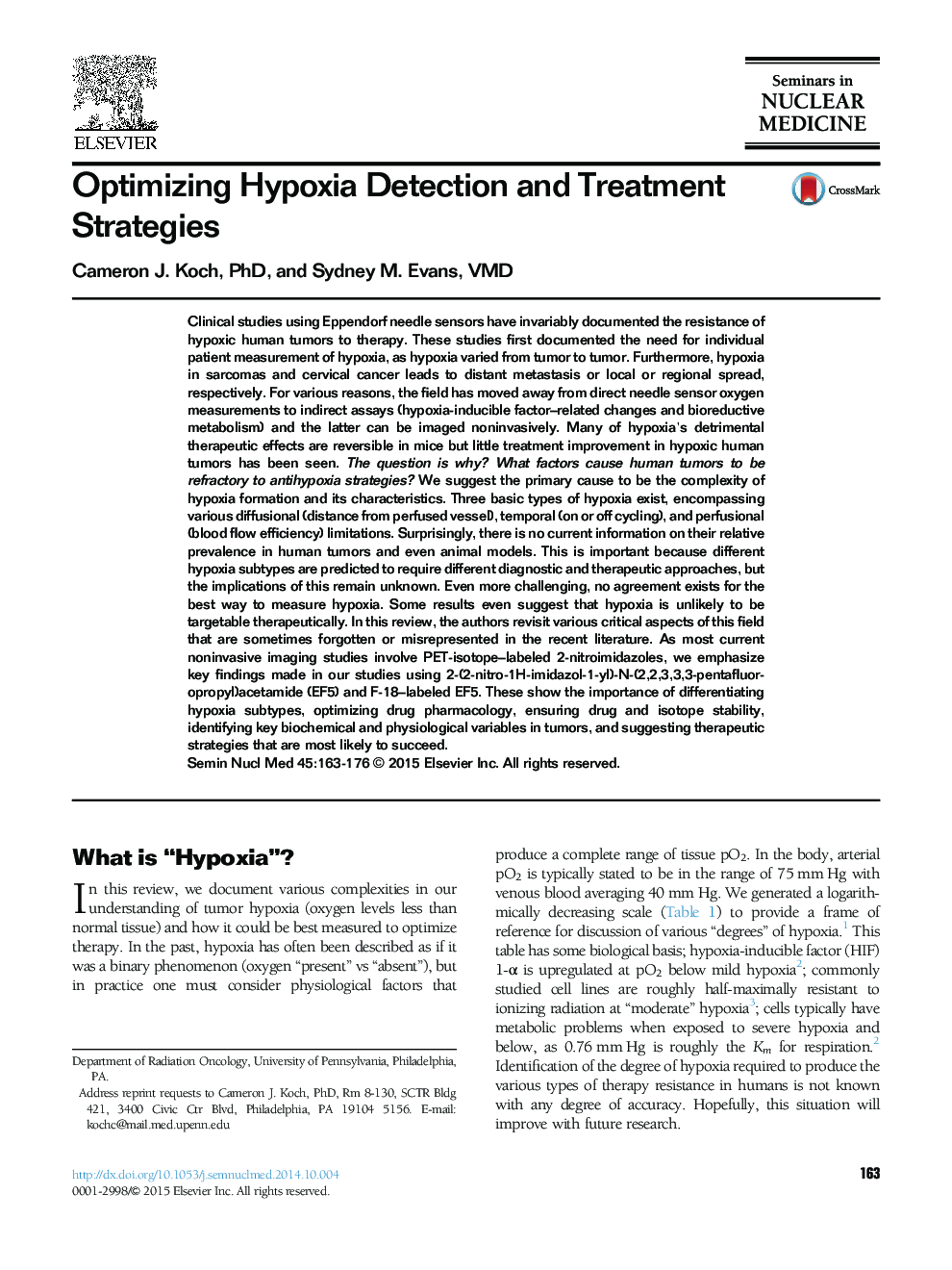| کد مقاله | کد نشریه | سال انتشار | مقاله انگلیسی | نسخه تمام متن |
|---|---|---|---|---|
| 4250903 | 1283937 | 2015 | 14 صفحه PDF | دانلود رایگان |
Clinical studies using Eppendorf needle sensors have invariably documented the resistance of hypoxic human tumors to therapy. These studies first documented the need for individual patient measurement of hypoxia, as hypoxia varied from tumor to tumor. Furthermore, hypoxia in sarcomas and cervical cancer leads to distant metastasis or local or regional spread, respectively. For various reasons, the field has moved away from direct needle sensor oxygen measurements to indirect assays (hypoxia-inducible factor–related changes and bioreductive metabolism) and the latter can be imaged noninvasively. Many of hypoxia׳s detrimental therapeutic effects are reversible in mice but little treatment improvement in hypoxic human tumors has been seen. The question is why? What factors cause human tumors to be refractory to antihypoxia strategies? We suggest the primary cause to be the complexity of hypoxia formation and its characteristics. Three basic types of hypoxia exist, encompassing various diffusional (distance from perfused vessel), temporal (on or off cycling), and perfusional (blood flow efficiency) limitations. Surprisingly, there is no current information on their relative prevalence in human tumors and even animal models. This is important because different hypoxia subtypes are predicted to require different diagnostic and therapeutic approaches, but the implications of this remain unknown. Even more challenging, no agreement exists for the best way to measure hypoxia. Some results even suggest that hypoxia is unlikely to be targetable therapeutically. In this review, the authors revisit various critical aspects of this field that are sometimes forgotten or misrepresented in the recent literature. As most current noninvasive imaging studies involve PET-isotope–labeled 2-nitroimidazoles, we emphasize key findings made in our studies using 2-(2-nitro-1H-imidazol-1-yl)-N-(2,2,3,3,3-pentafluoropropyl)acetamide (EF5) and F-18–labeled EF5. These show the importance of differentiating hypoxia subtypes, optimizing drug pharmacology, ensuring drug and isotope stability, identifying key biochemical and physiological variables in tumors, and suggesting therapeutic strategies that are most likely to succeed.
Journal: Seminars in Nuclear Medicine - Volume 45, Issue 2, March 2015, Pages 163–176
